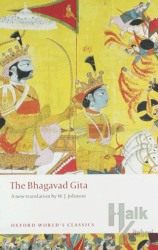Sylloge Nummorum Greacorum Turkey 10 (Ciltli)The Yavuz Tatış Collection Part 1 Lonia and Lydia

This catalogue is the tenth volume of the SNG Turkey Project and covers the Ionian and Lydian coins in the collection of Yavuz Tatış, a businessman and collector living in Izmir (ancient Smyrna). Majority of the coins were acquired from 1993 when Tatış started to form his collection and continued until 2010. It is inferred from the information given by vendors that the provenance of the coins was western Asia Minor in general. The catalogue presents 931 coins dating from Archaic to Roman Imperial period and the most represented ones are from Smyrna, Ephesus, Colophon, Phocaea, Magnesia ad Maeandrum, Miletus and Clazomenae in Ionia and Sardis, Philadelphia, Thyateira, Hypaipa and Magnesia ad Sipylum in Lydia. The unidentified coins are grouped under the title of “Uncertain Western Asia Minor” at the end of the catalogue.
During the preparation of the catalogue, Arif Yacı, one of my doctoral students, helped me from the beginning; he took the photographs of the coins and revised the catalogue as well. Besides, Michel Amandry, Sencan Altınoluk and Aliye Erol-Özdizbay also revised the catalogue before going into press. Monograms were drawn by Armağan Tan, one of my Master's students. Thus, I greatly appreciate all their contributions. I would also like to thank Yavuz Tatış, who facilitated my work greatly and provided me with a comfortable atmosphere to conclude my studies on his collection.
This SNG volume, like the previous ones, is published by the Turkish Institute of Archaeology; I would like to thank the Managing Board of the Institute in the person of its President Prof. Dr. Haluk Abbasoğlu.
- Açıklama
This catalogue is the tenth volume of the SNG Turkey Project and covers the Ionian and Lydian coins in the collection of Yavuz Tatış, a businessman and collector living in Izmir (ancient Smyrna). Majority of the coins were acquired from 1993 when Tatış started to form his collection and continued until 2010. It is inferred from the information given by vendors that the provenance of the coins was western Asia Minor in general. The catalogue presents 931 coins dating from Archaic to Roman Imperial period and the most represented ones are from Smyrna, Ephesus, Colophon, Phocaea, Magnesia ad Maeandrum, Miletus and Clazomenae in Ionia and Sardis, Philadelphia, Thyateira, Hypaipa and Magnesia ad Sipylum in Lydia. The unidentified coins are grouped under the title of “Uncertain Western Asia Minor” at the end of the catalogue.
During the preparation of the catalogue, Arif Yacı, one of my doctoral students, helped me from the beginning; he took the photographs of the coins and revised the catalogue as well. Besides, Michel Amandry, Sencan Altınoluk and Aliye Erol-Özdizbay also revised the catalogue before going into press. Monograms were drawn by Armağan Tan, one of my Master's students. Thus, I greatly appreciate all their contributions. I would also like to thank Yavuz Tatış, who facilitated my work greatly and provided me with a comfortable atmosphere to conclude my studies on his collection.
This SNG volume, like the previous ones, is published by the Turkish Institute of Archaeology; I would like to thank the Managing Board of the Institute in the person of its President Prof. Dr. Haluk Abbasoğlu.
Format:Kitap
- Taksit Seçenekleri
- Axess KartlarTaksit SayısıTaksit tutarıGenel ToplamTek Çekim192,50192,502100,10200,20368,02204,05634,65207,90923,53211,75Finansbank KartlarıTaksit SayısıTaksit tutarıGenel ToplamTek Çekim192,50192,502100,10200,20368,02204,05634,65207,90923,53211,75Bonus KartlarTaksit SayısıTaksit tutarıGenel ToplamTek Çekim192,50192,502100,10200,20368,02204,05634,65207,90923,53211,75Paraf KartlarTaksit SayısıTaksit tutarıGenel ToplamTek Çekim192,50192,502100,10200,20368,02204,05634,65207,90923,53211,75Maximum KartlarTaksit SayısıTaksit tutarıGenel ToplamTek Çekim192,50192,502100,10200,20368,02204,05634,65207,90923,53211,75World KartlarTaksit SayısıTaksit tutarıGenel ToplamTek Çekim192,50192,502100,10200,20368,02204,05634,65207,90923,53211,75Diğer KartlarTaksit SayısıTaksit tutarıGenel ToplamTek Çekim192,50192,502--3--6--9--
- Yorumlar
- Yorum yazBu kitabı henüz kimse eleştirmemiş.
- Yayınevinin Diğer Kitapları
- Yazarın Diğer Kitapları



























